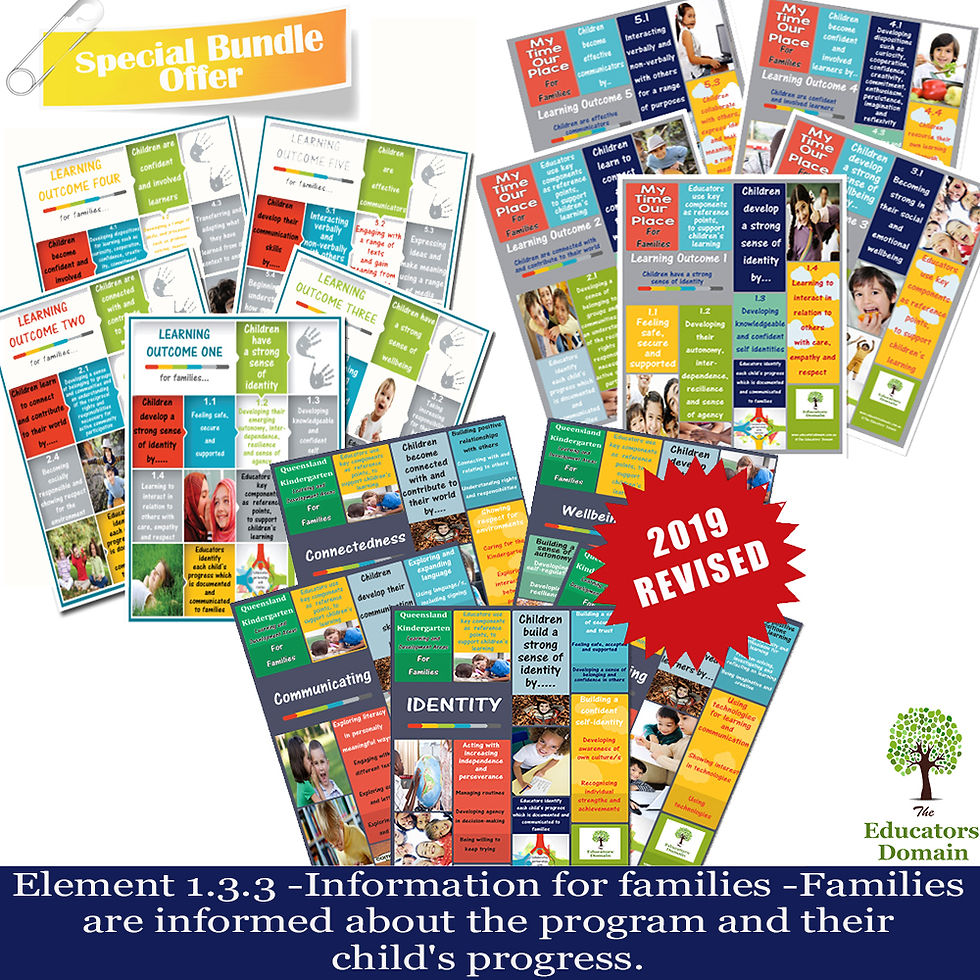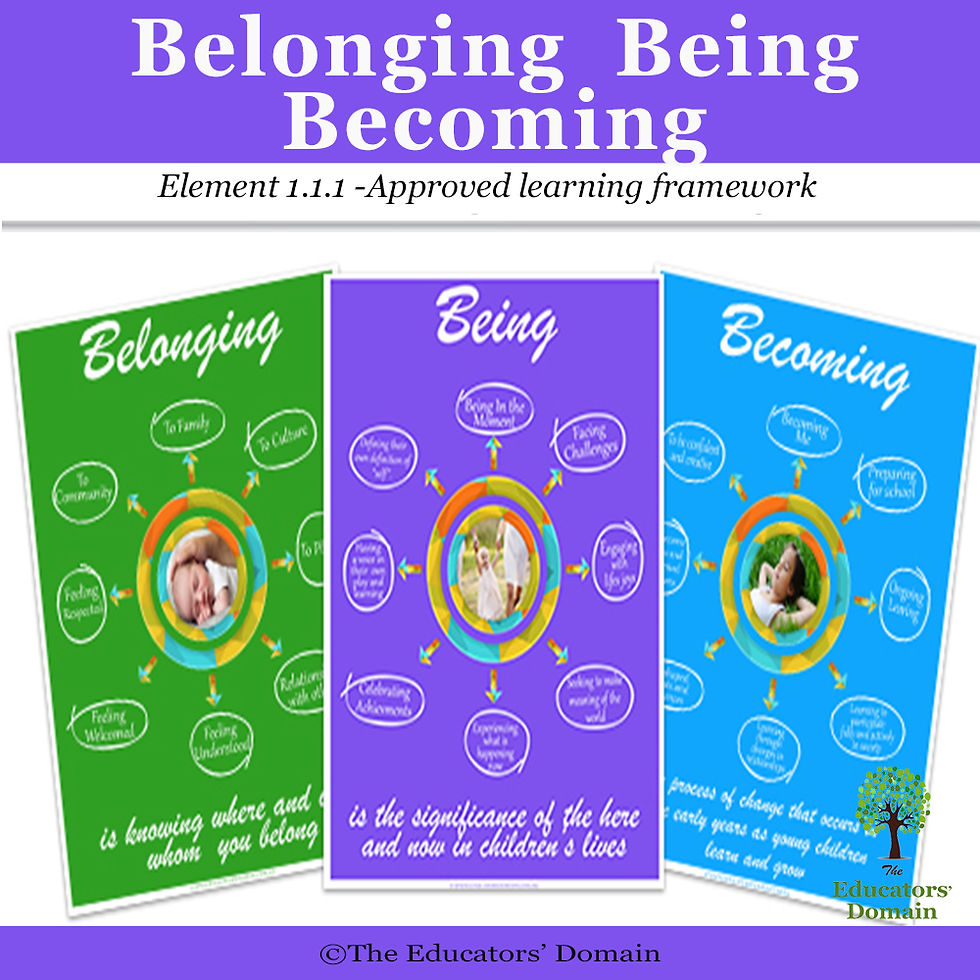Puzzle Day Activity Ideas- A celebration of puzzles in all their forms, far beyond just jigsaw puzzles.
National Puzzle Day, celebrated every year on January 29, is a celebration of puzzles in all their forms, far beyond just jigsaw puzzles. Conceived by Jill Jodi in 2002, this day highlights the joy and challenge of engaging in various types of puzzles, from crosswords and Sudoku to logic puzzles and brain teasers. It's an opportunity to appreciate the cognitive and developmental benefits that puzzles offer, especially for young children.
Engaging in puzzles enhances problem-solving skills, improves spatial awareness, and fosters critical thinking and persistence. For young learners, Puzzle Day becomes a platform for interactive learning, promoting cognitive development in a playful and engaging manner. Below are some ideas broken into age groups.
Quality Area 1: Educational program and practice, which emphasises the importance of stimulating learning experiences like puzzle-solving.
The theories of Jean Piaget, a renowned early childhood theorist, align closely with this concept. Piaget's theory of cognitive development underscores the significance of hands-on, exploratory learning activities, which is exactly what Puzzle Day offers, making it an enriching and educational celebration for children.

Birth to 3 Years: "Puzzle Parade"
Materials:
Large foam puzzle pieces (various colors and shapes)
Soft mats for floor play
Instructions:
Spread out the foam puzzle pieces on soft mats.
Encourage infants and toddlers to explore and fit the pieces together.
Guide them in recognizing colors and shapes as they play.
EYLF Outcome: 4.1 Children develop a growth mindset and learning dispositions such as curiosity and cooperation VEYLDF Outcome: 3.2 Children take increasing responsibility for their own health and physical well-being.
Analysis of Learning: This activity enhances gross motor skills and spatial awareness. It also introduces basic problem-solving skills and supports cognitive development through color and shape recognition.
3 to 5 Years: "Tiny Town Builders"

Materials:
Interlocking blocks or puzzle pieces
Pictures of simple buildings for inspiration
Instructions:
Show children pictures of buildings and encourage them to recreate them using blocks or puzzle pieces.
Facilitate teamwork by having them work in small groups to build their 'tiny town.'
QKLG Outcome: Active Learning - Building positive dispositions towards learning
VEYLDF Outcome: 4.2 Children develop a range of skills and processes such as problem-solving
.
Analysis of Learning: Building with blocks or puzzle pieces enhances fine motor skills, and spatial reasoning, and encourages cooperative play. This activity also fosters creativity and introduces basic architectural and engineering concepts.

5 to 8 Years: "Puzzle Quest" Materials:
A variety of puzzles (jigsaw, crosswords, word searches, simple logic puzzles)
Timer (optional for a challenge element)
Instructions:
Set up a puzzle station with different types of puzzles.
Challenge children to solve as many puzzles as they can, individually or in teams.
Use a timer for a fun challenge to see how many puzzles can be solved in a set time.
MTOP Outcome: 4.1 Children and young people develop a growth mindset and learning dispositions such as curiosity, cooperation, confidence, creativity, commitment, enthusiasm, persistence, imagination, and reflexivity.
Analysis of Learning: Engaging in various puzzles enhances critical thinking, literacy, and numeracy skills. This activity promotes resilience and collaborative learning, as well as the development of a growth mindset and persistence in problem-solving.
Download our Puzzle Pack, featuring a collection of editable puzzle templates perfect for inclusion in your child's portfolio or learning stories, use these to easily document the learning from the above activities. Each pack also includes a bonus poster that outlines the benefits of puzzle-solving, directly aligning with Learning Outcome 4: Children are confident and involved learners, making it an invaluable tool for documenting developmental milestones and joyful learning experiences.

Birth to 3 Years: "Sensory Puzzle Path"
Materials:
Soft, large puzzle mats with different textures (e.g., felt, rubber, faux grass)
Simple shape puzzles with large pieces
Instructions:
Create a sensory path using the textured mats for infants and toddlers to crawl or walk on.
Along the path, place simple shape puzzles for them to solve.
EYLF Outcome: 3.2 Children become strong in their physical learning and wellbeing. VEYLDF Outcome: 3.2 Children take increasing responsibility for their own health and physical wellbeing
Analysis of Learning: This activity develops sensory processing and fine motor skills. The textures stimulate tactile senses, and solving shape puzzles enhances cognitive development.

3 to 5 Years: "Nature's Puzzle Hunt"
Materials:
Outdoor space (garden or playground)
Natural materials (leaves, sticks, stones) to create simple puzzles
Picture cards showing the desired puzzle outcome
Instructions:
Children explore the outdoor area to gather natural materials.
Use the materials to recreate the puzzles shown on the picture cards.
QKLG Outcome: Connectedness - Building positive relationship VEYLDF Outcome: 4.3 Children transfer and adapt what they have learned from one context to another
.
Analysis of Learning: This activity promotes environmental awareness and creativity. Children develop problem-solving skills and learn to adapt ideas in new contexts using nature-inspired puzzles.

5 to 8 Years: "Mini-Maze Creators"
Materials:
Cardboard boxes, tape, and markers
Small objects to navigate through the maze (e.g., marbles, toy cars)
Instructions:
Children design and create mazes using cardboard boxes and tape.
They navigate their mazes with marbles or toy cars, and challenge peers to solve them.
MTOP Outcome: 4.2 Children and young people develop a range of learning and thinking skills and processes such as problem-solving, inquiry, and experimentation.
VEYLDF Outcome: 4.3 Children transfer and adapt what they have learned from one context to another.
Analysis of Learning: Designing and navigating mazes fosters spatial awareness, engineering skills, and creativity. It encourages children to think critically and engage in problem-solving.
Download our Puzzle Pack, featuring a collection of editable puzzle templates perfect for inclusion in your child's portfolio or learning stories, use these to easily document the learning from the above activities. Each pack also includes a bonus poster that outlines the benefits of puzzle-solving, directly aligning with Learning Outcome 4: Children are confident and involved learners, making it an invaluable tool for documenting developmental milestones and joyful learning experiences.
Birth to 3 Years: "Colour Match Garden"

Materials:
Large foam puzzle pieces in various bright colors
Matching coloured objects (toys, balls, fabric pieces)
Instructions:
Spread out the coloured foam puzzle pieces in an open play area.
Place matching coloured objects near each puzzle piece.
Encourage infants and toddlers to match the objects with the corresponding colored puzzle piece.
EYLF Outcome: 5.4 Children begin to understand how symbols and pattern systems work.
VEYLDF Outcome: 3.2 Children take increasing responsibility for their own health and physical well-being.
Analysis of Learning: Enhances color recognition, and matching skills, and encourages exploration and mobility.

3 to 5 Years: "Story Puzzle Theatre"
Materials:
Jigsaw puzzles that create scenes from popular children's stories
Props or costumes related to the stories
Instructions:
Children complete the jigsaw puzzles to reveal scenes from stories.
Once a puzzle is completed, they use props or costumes to act out the story or create their own narrative based on the puzzle scene.
QKLG Outcome: Communicating - Exploring and expanding language.
VEYLDF Outcome: 5.1 Children interact verbally and non-verbally with others for a range of purposes.
Analysis of Learning: Encourages literacy through puzzle-solving and storytelling, and develops imagination and communication skills.
5 to 8 Years: "Puzzle Code Breakers"

Materials:
Puzzles with encoded messages (could be simple cryptic puzzles or riddles)
Decoding sheets or tools
Instructions:
Children solve puzzles to reveal encoded messages.
Use decoding sheets or tools to decipher the messages, which could lead to a fun fact, a riddle, or the next puzzle.
VEYLDF Outcome: 4.2 Children develop a range of skills and processes such as problem-solving.
MTOP Outcome: 4.2 Children and young people develop a range of learning and thinking skills and processes such as problem-solving, inquiry, and hypothesising.
Analysis of Learning: Promotes critical thinking, problem-solving, and literacy skills, encouraging children to engage in code-breaking and deciphering tasks.
Each activity is designed to cater to the developmental needs of each age group while aligning with the respective educational frameworks.

Birth to 3 Years: "Water Whirl Puzzles"
Materials:
Large waterproof foam puzzle pieces
Shallow water play area or paddling pool
Instructions:
Scatter the waterproof puzzle pieces in the shallow water area.
Allow infants and toddlers to wade through the water to collect and fit the puzzle pieces together.
EYLF Outcome: 3.1 Children become strong in their social, emotional, and mental well-being.
VEYLDF Outcome: 3.1 Children become strong in their social, emotional, and spiritual well-being.
Analysis of Learning: Enhances sensory play with water, promoting physical coordination and problem-solving skills. Offers a fun and engaging way to explore floating and sinking concepts.
3 to 5 Years: "Sand Sculpture Quest"

Materials:
Sandpit or sandbox
Puzzle shapes or templates
Small tools for sand sculpting
Instructions:
Embed puzzle shapes or templates in the sandbox.
Children dig and sculpt the sand to match the shapes or complete the puzzle templates.
QKLG Outcome: Wellbeing - Exploring ways to be healthy and safe.
VEYLDF Outcome: 4.3 Children transfer and adapt what they have learned from one context to another.
Analysis of Learning: Encourages creativity and tactile exploration. Develops fine motor skills and spatial awareness as children manipulate sand to create puzzle shapes.
5 to 8 Years: "Nature Detective Trails"

Materials:
Outdoor area with natural features
Clue cards and puzzles related to nature (e.g., identifying leaves, animal tracks)
Magnifying glasses and observation sheets
Instructions:
Set up a trail with clue cards and puzzles placed along the path.
Children use observation sheets and magnifying glasses to solve nature-related puzzles and find their way along the trail.
VEYLDF Outcome: 4.2 Children develop a range of skills and processes such as problem-solving.
MTOP Outcome: 4.3 Children and young people transfer and adapt what they have learned from one context to another.
Analysis of Learning: Promotes outdoor exploration and environmental education. Enhances observation skills, and critical thinking, and encourages an appreciation for nature.
These activities incorporate unconventional and engaging methods to encourage problem-solving and exploration in young children, making learning both fun and educational.
Download our Puzzle Pack, featuring a collection of editable puzzle templates perfect for inclusion in your child's portfolio or learning stories, use these to easily document the learning from the above activities. Each pack also includes a bonus poster that outlines the benefits of puzzle-solving, directly aligning with Learning Outcome 4: Children are confident and involved learners, making it an invaluable tool for documenting developmental milestones and joyful learning experiences.




































Comments